Foreigners may find themselves stumped when they realize that conversing in Korean is not as easy as one might think. When it comes to addressing people in Korean & Korean etiquette, speakers should keep in mind that there’s a hierarchy they need to familiarize themselves with.
How you say simple things like “hello” depend upon what kind of relationship you have with the person you’re greeting. But surprisingly, it’s easy to understand this complex system of Korean honorifics and conjugations if you learn a few core principles.
It takes a little practice to master it and get it right. However, the best way to learn is to immerse yourself in the experience. Get yourself out there; talk to locals. The more you try addressing people in Korean, the better you’ll get at grasping these core concepts.
If you’re worried about offending people, remember that practice makes perfect. Koreans greatly appreciate foreigners trying to converse with them in Korean. If you make mistakes, most of them will politely inform you, because they’re generally quite understanding of foreigners nowadays.
In fact, most foreigners are not expected to strictly adhere to these complex rules (thank goodness!).
Even though locals are generally lenient when it comes to how foreigners should address people in Korean, learning how to show proper respect will protect you from the occasional elder’s side eye (they’re the touchy ones, to be honest).

Figuring Out Formality in Korean
Before diving into the common ways of greeting Koreans, let’s get the formality out of the way. There are seven levels of tone or formality in Korean, but foreigners only need to know the important ones: casual, polite, and formal.
The first one is called casual speech or banmal (literally “half words”). Casual speech is only used when you’re with your closest friends and classmates (and you might want to check out this article explaining when it is okay to call a Korean a friend).
You can also speak casually to your family and those younger than you (also considered people of ‘lesser seniority.’) Social ranks matter, too, so don’t just speak casually to anybody— not even to people you’ve worked with for awhile.
In Korean culture, you have to wait until they tell you it’s okay to speak in banmal with them. Until then, stick to the polite and formal methods of addressing people in Korean. The second one is called polite speech, a lower form of jondaemal (there are two common forms).
Neglecting to use this when speaking with strangers in Korean (and acquaintances) might make you come across as disrespectful and offensive. So if you want to stay on neutral ground with someone, always remember to end your sentences with “요” (yo). This sentence particle immediately adds a polite tone to how you speak.
Lastly, formal speech ( a higher form of jondaemal) is generally used when speaking to people from ‘higher seniority’ groups within your personal hierarchy. These are the people you have to talk to formally, because you’ll be considered rude if you don’t; like your boss, the principal at your child’s school, etc.
When you feel stumped as to which to use, foreigners generally stay in a polite space by using the mid-level polite speech when addressing Korean people. How do I know which form to use with someone I’m just getting to know? Easy. Just ask them when their birthday is.
Westerners might find it rude to casually ask people their age, but this is entirely normal in Korea, as they use this info to determine how to address you correctly. After learning whether they’re older or younger, you can adjust your speech accordingly.
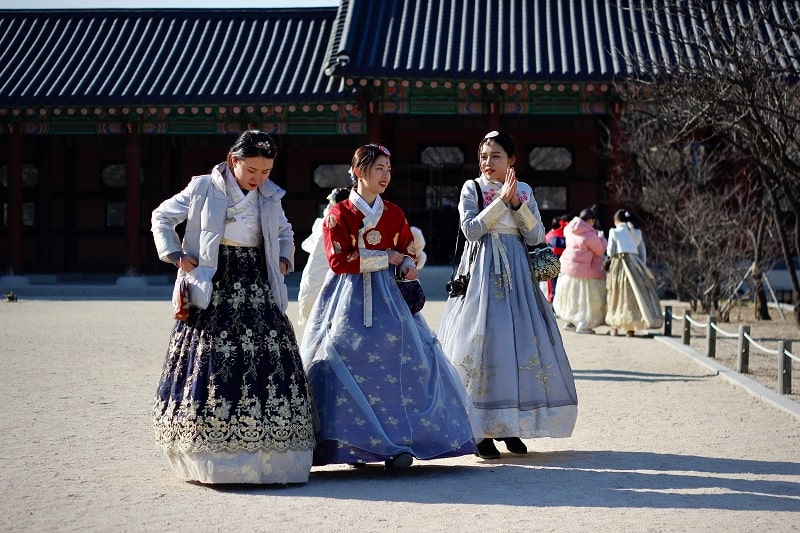
How to Greet People in Korean
Don’t forget to bow! You may have noticed that in most Asian countries, they bow when greeting and thanking others. For casual settings, just a slight tilt of the head or a swift bow is okay. If you find yourself in formal situations, how low you bow determines the level of respect you give the other person.
So make sure to familiarize yourself with each attendee’s social position, or to be safe, just always bow mid-way. Whether bowing in a casual or formal setting, hold your hands to the side (for men) or in front of you (for women) during the bow.
Now that you have familiarized yourself with addressing people in Korean, let’s figure out what to say next. Below are suggestions on how to greet someone while, at the same time, applying what we just learned about formality.
- Polite: 안녕하세요 (Annyeonghaseyo)
Casual: 안녕 (Annyeong)
Formal: 안녕하십니까 (Annyeong hasimnikka)
"Annyeonghaseyo" is the first phrase you learn after cracking a Korean textbook. Widely known as the standard greeting in Korea, this phrase is helpful in any situation. Whether you’re introduced to someone new or interacting with someone in a restaurant or convenience store, it is polite to greet others with “annyeonghaseyo.”
Many think this translates to "hello," but it doesn't. The actual meaning of this sentence is "are you at peace" or “be at peace,” but Koreans use it as a way to greet somebody at any point of the day. When you are around friends or family, you can generally drop the "haseyo" and say simply "annyeong."
The moment you start greeting people like this, it’s interpreted as a sign of closeness. Remember that in Korea, how you address people matters – so if you still talk to them using a formal tone, they can also feel hurt because it's like you're distancing yourself from them.

Making a Good Impression in Korean (in Each Level of Politeness)
Speaking of metaphorical distance, if you live & work in Korea as I did, some social situations may require you to greet your supervisors and other higher-ups at work. Impress them by saying, "Annyeong hasimnikka?"
Note that this is phrased as a question, and you have to convey this phrase in a manner that sounds like you're genuinely interested to know. Usually, the standard reply to this is "Annyeong hasimnikka," followed by a cordial smile, but trust that they'll remember you for leaving such a positive impression.
- Polite: 만나서 반가워요 (Mannaseo bangawoyo)
Casual: 만나서 반가웠어요 (Mannaseo bangawoseoyo)
Formal: 만나서 반갑습니다 (Mannaseo bangapseumnida)
Koreans consider first impressions to be a big deal. That’s why, aside from dressing nicely and just generally grooming yourself, you must ensure that you know the right words to say. So aside from saying “Annyeonghaseyo,” they’ll likely be even more impressed if you say “Mannaseo bangapseuminida.”
Saying this phrase is equivalent to “it’s a pleasure to meet you;” you can say this to large groups if you have to introduce yourself to a new crowd.
- Polite: 오랜만이에요 (oraenmanieyo)
Casual: 오랜만에 (Oraenmane)
Formal: 오랜만입니다 (oraenmanimnida)
You use these phrases when you meet someone that you haven’t seen in a long time. You can also say 그동안 잘지냈어요? (Geudongan jaljinaesseoyo) to ask if they have been well during the period you haven’t seen each other.
- Polite: 잘 잤어요? (Jal jasseoyo?)
Casual: 잘 잤어? (Jal Jasseo)
Formal: 잘 주무셨어요?) (Jal Jumusyeosseoyo)
Living in a shared space is common in Korea, most especially if you are in Seoul (because it can get quite expensive to stay in one-room flats or apartments in Korea). So if you have roommates, the standard greeting between you would most likely be “Jal jasseoyo?” which translates to “did you sleep well?”
Asking them about their sleep also shows how much Koreans consider each other’s health, another insight into the very community-oriented culture here. There’s also another health-related greeting that’s strictly reserved for people you know tremendously well, and it’s 밥 먹었어요? (Bap meogeosseoyo?) or “have you eaten rice?” in Korean.
The reason is that what usually follows this greeting is an invitation to eat, especially if the asker is older than the person they’re addressing (so use this phrase wisely!).
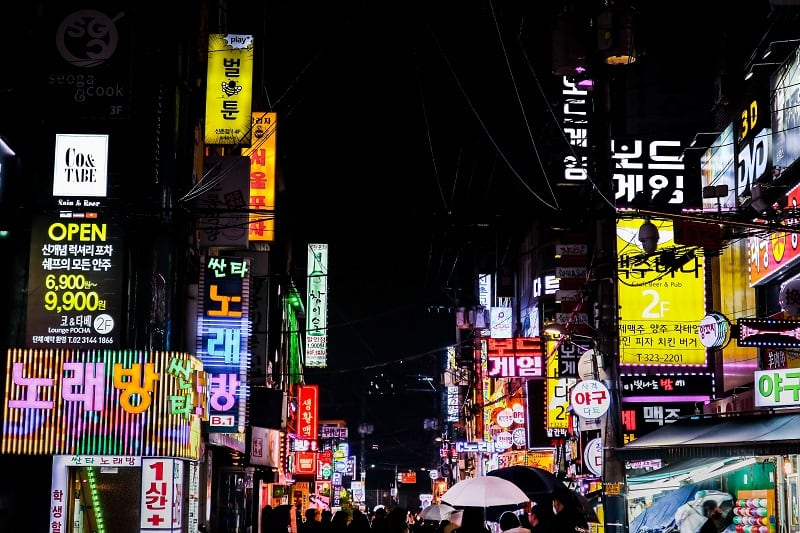
Primer on Social Hierarchy in Korea
Family Culture & Gender Equity
One of the things that really surprised me when I lived in Korea was the idea that most locals still come home to their families every weekend, even if they live miles away. While Westerners are generally okay being away from home for months, most Koreans can’t stand being out that long.
Moreover, this culture of putting family first is still strongly observed nowadays, and decisions big or small involve the family. This is because Korean society is still quite patriarchal, with South Korea actually having the largest wage gap between the sexes of any country in the OECD.
As of 2017, women are making ~63% of what men make for doing the same jobs. Consequently, men in the households are expected to lead, and while it is true that people are trying to be more equitable about this, South Korea still has a long way to go in its gender empowerment movement.
Thus, being a woman in Korea can be pretty challenging, especially insofar as your career options (and from conversations with friends, I’d say it’s even harder to be a Korean woman than a foreign woman in Korea).
Still, the Korean Women’s Association has at least partially shifted the perspective of males being the expected breadwinner of their families.
This has brought with it the possibility of single mothers and well-educated women being able to contribute more to companies that might choose to hire them, slowly increasing the proportion of females in the office.
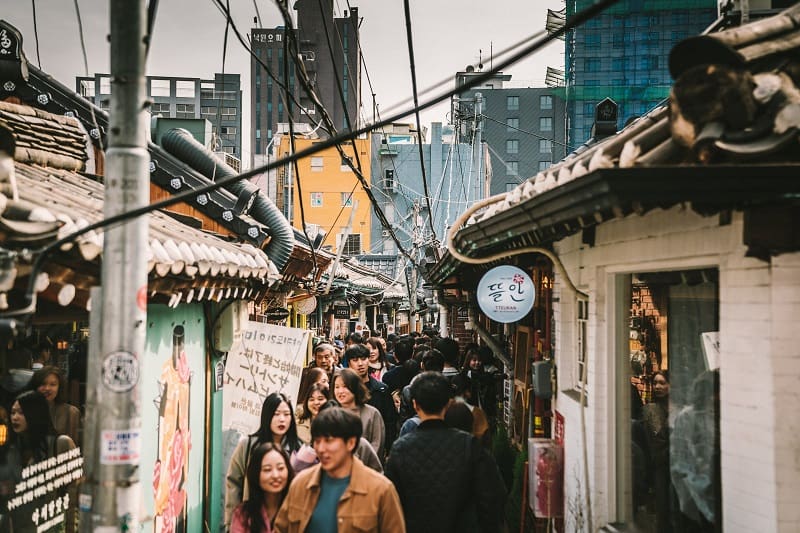
What’s Your Korean Age? (No More!)
As of early 2023, Korean have officially done away with Korean age. But unofficially? It's still good etiquette in Korea to ask people their age, and they may tell you their new or older age.
Even though Confucian rules are mostly relaxed nowadays, people still defer to age as a way to determine the level of respect with which they speak to you. Elders will always expect you to respect and obey them, and how you present yourselves to them truly matters.
It can affect the tide of how the entire family feels about you, so always remember to be mindful of age whenever you’re addressing people in Korean. As for relationships outside the family, Koreans prefer to interact mainly with those close to them, like classmates or co-workers.
It is rare to see them branch out and seek friendships elsewhere; if they do, it’s usually because they’re looking for potential romantic partners. So if you’re interested in making a Korean friend, it is often advised to approach them first rather than wait for them to talk to you.
While classroom settings are laxer (since most people come from the same age group and friendships can be made easily), corporate settings are a bit tricky because there’s this challenging aspect of noting and remembering your colleagues’ social status and ages.
Furthermore, fresh hires may find it challenging to get their points across, and your sunbaenims (students older than you) might take advantage of your newness. Still, you’ll find that these groups are each their own cohesive systems that value teamwork and community over individual gain.
They encourage and treat their co-workers like family members, and staff tend to go out at least once a month for company dinner (known as hweshik). These gatherings always involve anju (there’s a list of those here).
Unless they have young kids or other family responsibilities, it’s rare to see Koreans head home early. Overtime is an unspoken rule here, and to make the workplace tolerable, everyone is encouraged to build good relationships rather than put each other down.
To do so while keeping the workplace primarily for work, the team will leave the office together for their monthly hweshik. Afterwards, they often walk together to have some fun in a noraebang or do soju bombs in a local gopchang restaurant.
How to Address Strangers in Korean
Even though you’ll likely never come across them again, Koreans observe and remember how you treat others, especially as a foreigner. I’d recommend acting as if you are being monitored 24/7, because having terrible manners might affect how others in your community treat you.
I mentioned earlier that Koreans generally make an effort to have good relationships with people in their community, so if you are unwittingly rude, everybody might just hear about it.
If you wish to be close with your community, especially if you live in rural Korea, one of the best ways to make them like you is to address them with proper Korean honorifics.
Korean Honorifics List (& Meanings)
While watching Korean dramas, you’ll notice different ways to call or address a person depending on their status or role, as well as their gender. These are called honorifics, and you say these to show respect for the person’s chosen trade or standing in life.
Learning how to use honorifics in Korean is not hard, and it's good Korean etiquette to learn. You can ask locals what they prefer to be called and they’ll be happy to tell you, because to them titles are just as important as knowing their ages.
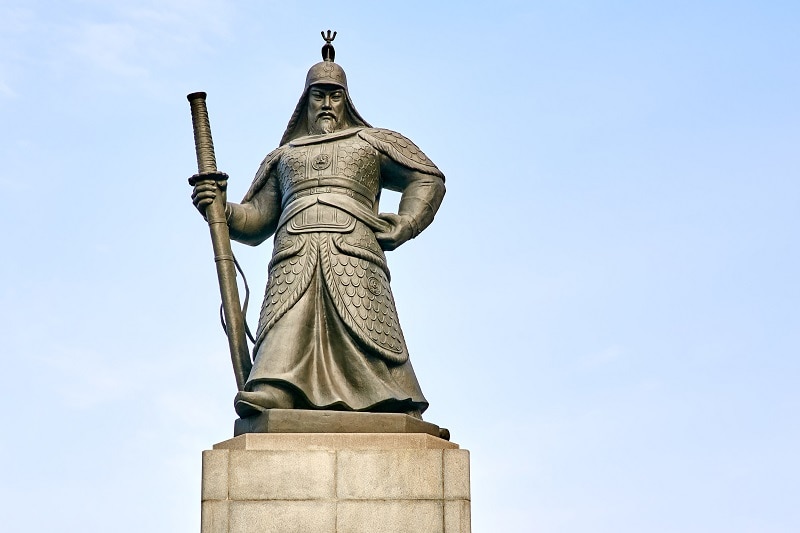
Below is a list of the most common Korean honorifics you’ll likely encounter during your stay here:
오빠 (oppa) – older brother
Females use this to call a male friend or family member who is older than them.
형 (hyung) – older brother
Males use this to call a male friend or family member who is older than them.
언니 (eonni) – older sister
Females use this to refer to a female friend or family member who is older than them.
누나 (noona) – older sister
Males use this to refer to a female friend or family member who is older than them.
선배 (sunbae) – senior
A common honorific juniors call their seniors in a university or industry.
후배 – (hoobae) - senior
Seniors in a university or industry refer to their juniors as hoobae.
동생 (dongsaeng) – younger sibling
Even though older siblings usually call their younger friends or siblings by their name, they often use this honorific if they speak about them to others. Younger females are 여동생 (yeodongsaeng) and younger males are 남동생 (namdongsaeng).
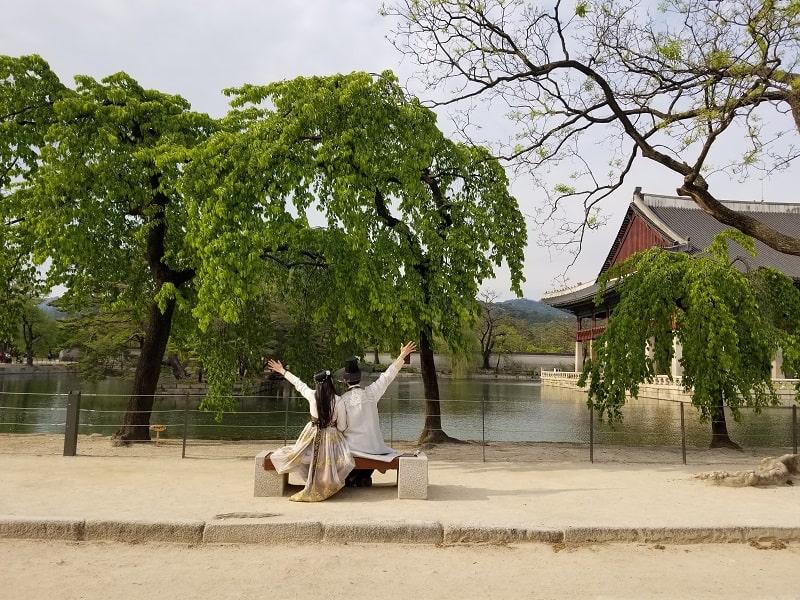
씨 (ssi) – Mr./Miss/Mrs.
In business settings, people use this honorific to respect people of equal standing. Always say the person's full name before you append –ssi, because only saying the surname with this honorific implies that you think that the other person you're talking to is from a lesser social status than you are.
님 (nim) – same meaning as –ssi, but more polite.
Slightly above “-ssi” is –nim, and you use this honorific for distinguished community members. Those who have proven themselves in their respective trades are given this title, and those who refer to you with this honorific mean that they admire you and think you’re above them in social standing.
Also, if guests, customers, or clients are unfamiliar to you, it’s best to use –nim rather than –ssi, which is why you’ll usually be addressed as 손님 (son-nim) in shops and restaurants.
아주머니 (ajumoni) – middle-aged woman
아저씨 (ajusshi) – middle-aged man
Use these honorifics with caution, as not a lot of middle-aged Koreans may feel happy to be called this. So if you don’t know what to say, just call the person by saying 죄송한데요 (joesonghandeyo) – which is a respectful way of saying “excuse me.”
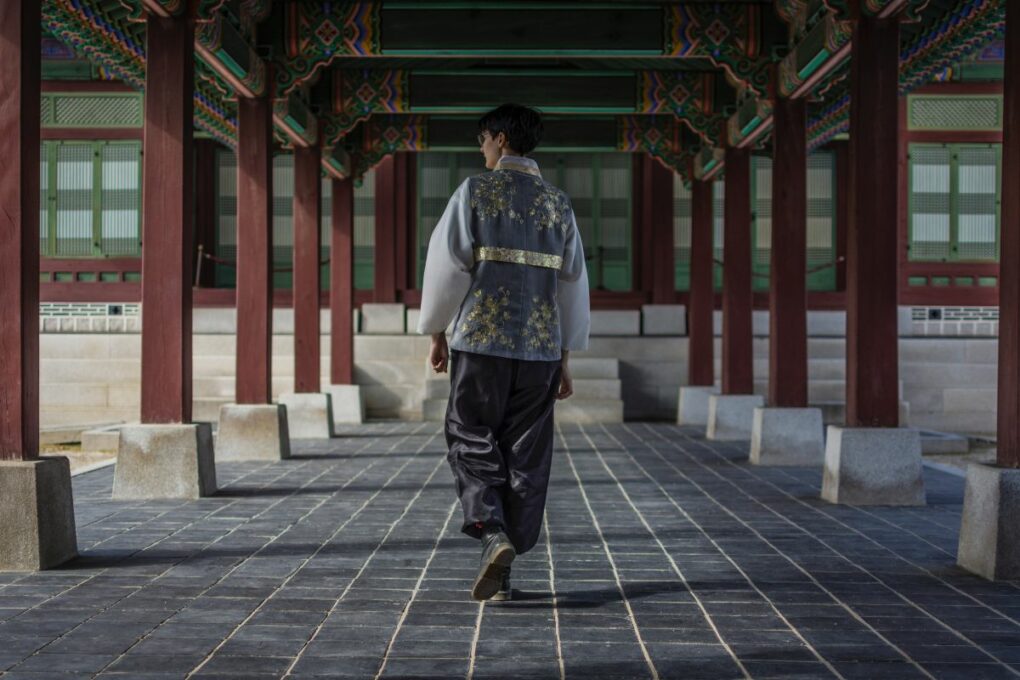
아버님 (abunim) – father[-in-law]
어머님 (eomunimr) – mother[-in-law]
할아버님 (halabeonim) – grandfather[-in-law]
할머님 (halmeonim) – grandmother[-in-law]
Whenever you watch Korean dramas, you’ll notice that characters call their friends or significant other’s family members with titles that pertain to family roles. Note that they end each title with –nim because they are not directly related to them.
사장님 (sajangnim) – business owner
You may hear this a lot in restaurants (since most people who run these places are business owners), but this title is flexible. It could mean CEO, president, manager, or boss. If you notice that the person running the show appears younger, use 대표님 (daepyonim) instead.
이모님 (imonim) – aged aunt
When you’re in a restaurant and unsure what to call the female servers who obviously aren’t the sajangnim, use this honorific instead – but only if they appear to be aged women.
More honorifics are used when addressing people in Korean, but these are the commonly used ones. If you wish to have a comprehensive understanding of how honorifics work, 90 Day Korean has a detailed guide that’s worth reading.
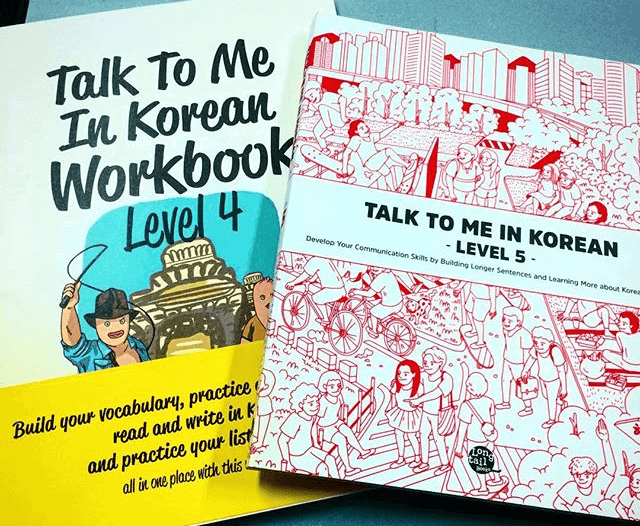
How to Say Goodbye in Korean
In Korea, you don’t just say “bye.” Depending on who you are talking to and whether you’re leaving or staying, you’ll have to be mindful of how you say goodbye. Here are five common ways to say goodbye to your Korean friends:
- Polite: Annyeonghi gyeseyo (안녕히 계세요)
Casual: Annyeong (안녕)
Formal: Anneyonghi gyesipsio (안녕히 계십시오)
Say this if you are leaving, but the other person is staying. “Gye” means to “exist,” so whenever you leave, you tell others who are staying to “peacefully exist.”
You can also give them a heads up that you’re leaving first by saying 나 먼저 갈게 (na meonjeo galke), which means “I will go first.”
- Polite: Annyeonghi gaseyo (안녕히 가세요)
Casual: Annyeong (안녕)
Formal: Annyeonghi gasipsio (안녕히 가십시오)
This time let’s focus on the “ga” (가). This means “go.” So when you say this, you are telling the person leaving to “go peacefully.” You only use this when the other person is leaving, but you are staying. A more simple way to bid others who are leaving well is to say 잘 가요 (jal gayo), which means “go well.”
What if the both of us are leaving or separating from each other? Then it is more appropriate to use “Annyeonghi gaseyo”.
- Casual: Da-eume bwa (다음에 봐)
Formal: Da-eume bwayo (음에 봐요)
This phrase means “see you next time,” and you can use it in addition to the other “goodbye” phrases above.
Now that you know what to keep in mind when addressing people in Korean, practice everything you learned today in public because that’s where you get to test your skills to remember it better. Hopefully, you’ll be able to master Korean in no time. Until then, 다음에 봐요!

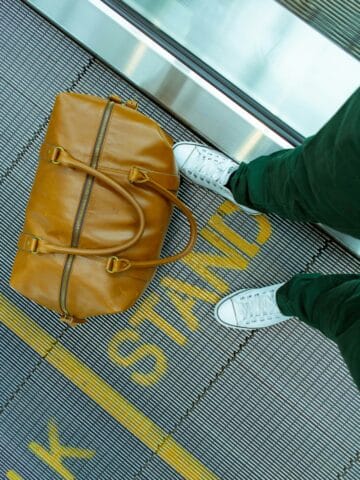
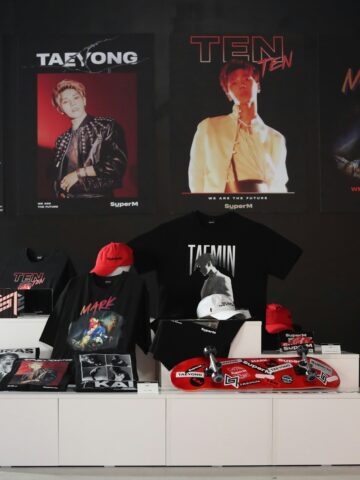


Comments
No Comments